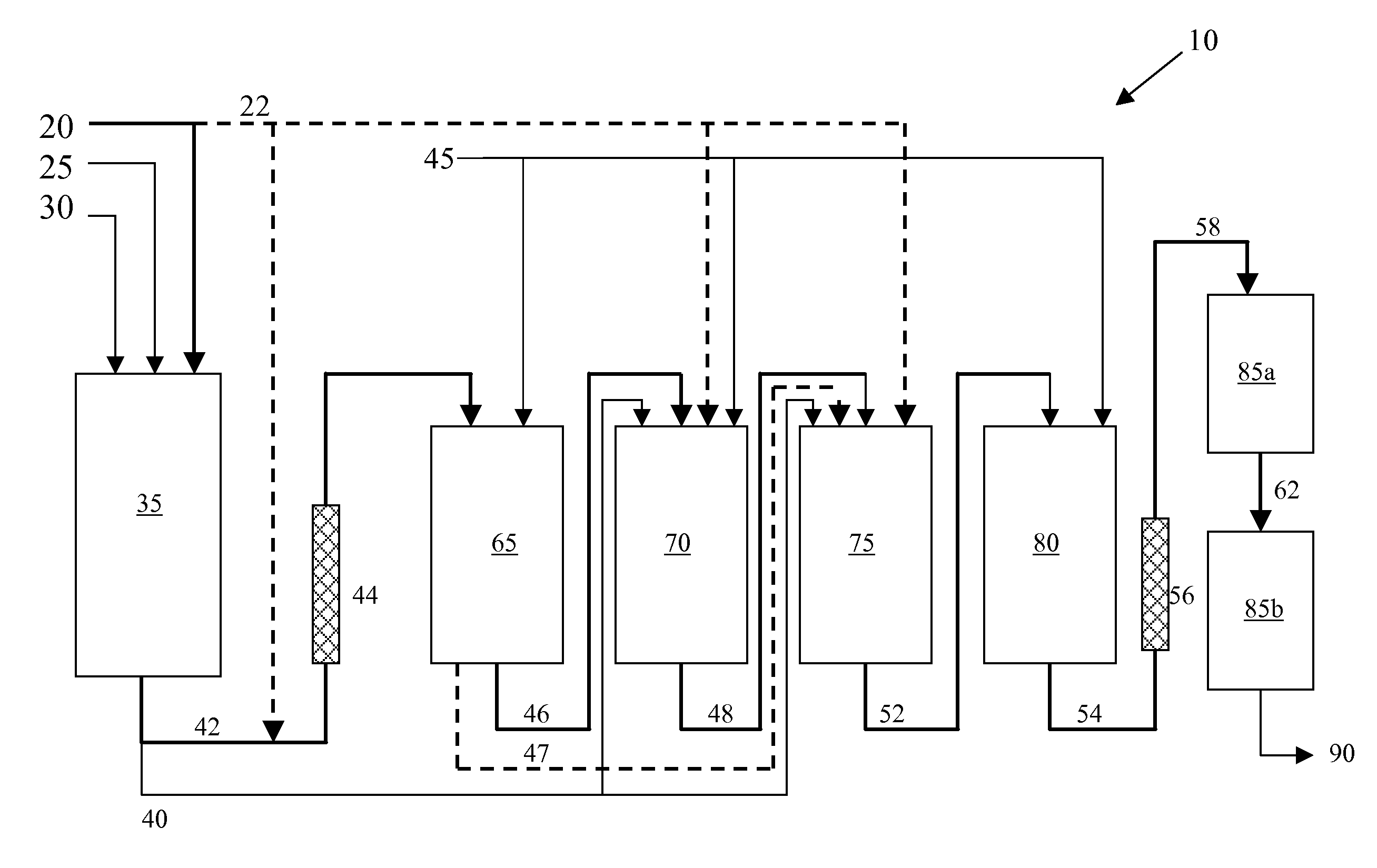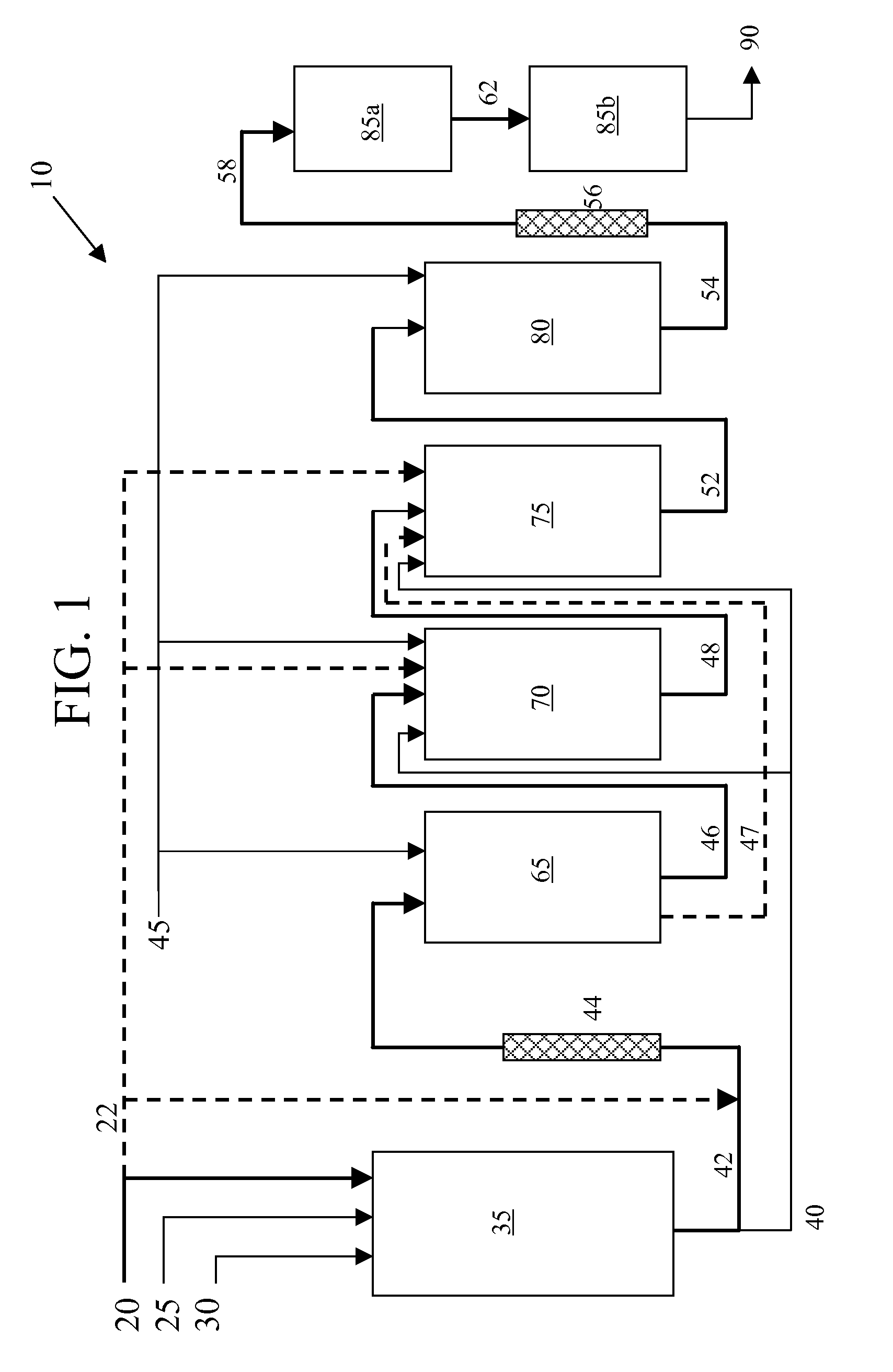Process for making high impact strength polystyrene and related compositions
a polystyrene and high impact strength technology, applied in the field of making high impact strength polystyrene resin, can solve the problems of reducing the aesthetic properties of hips resin and products made from hips resin, reducing the gloss of conventional hips resin, and reducing the strength of the resin
- Summary
- Abstract
- Description
- Claims
- Application Information
AI Technical Summary
Benefits of technology
Problems solved by technology
Method used
Image
Examples
example 1
[0116] Samples 1 through 15 were prepared using the Polymerization Properties shown in Table 1. A styrene solution containing 8, 11, or 14 weight % of a 80 / 20 weight ratio of polybutadiene available commercially as Diene® 55AC10 by Firestone Polymers, LLC and a styrene butadiene block copolymer, wherein the polybutadiene is found primarily in monoblocks available commercially as K-Resin® SBC KK 38 by Chevron Phillips Chemical Company LP, were both supplied and essentially dissolved in styrene monomer at room temperature. The solution was warmed to 70° C. and was fed continuously to a stirred tank reactor. Also added to this feed was toluene, at a rate of 0.95 lb / hr, and mineral oil, at a rate of 1.2 lb / hr. The reaction was initiated with 150, 225, or 300 ppmw (parts per million by weight of reactants charged) of an organic peroxy initiator being added to the feed at a rate of 0.5 lb / hr. Finally, a chain transfer agent, terpinolene, was added to the feed at a rate of 0.4 lb / hr. The f...
example 2
[0120] Examples 1 through 15 were prepared using the Polymerization Properties shown in Table 4. A styrene solution containing 8, 11, or 13 weight % of a 80 / 20 weight ratio of polybutadiene available commercially as Diene® 55AC10 from Firestone Polymers, LLC, and a styrene butadiene block copolymer available commercially as K-Resin® SBC KRDEV020 from Chevron Phillips Chemical Company LP, wherein butadiene is found primarily in tapered blocks, were both essentially dissolved in styrene monomer at room temperature. The solution was warmed to 70° C. and was fed continuously to a stirred tank reactor. Also added to this feed was toluene, at a rate of 0.95 lb / hr, and mineral oil, at a rate of 1.2 lb / hr. The reaction was initiated by an organic peroxy initiator, added to the feed at a rate of 0.5 lb / hr. Finally, a chain transfer agent, terpinolene, was added to the feed at a rate of 0.4 lb / hr. The flow into and out of the first CSTR reactor was equal, and the level was maintained such tha...
example 3
[0122] Samples 1 through 19 were prepared using the Polymerization Properties shown in Table 6. A styrene solution containing 8, 11, or 13 weight % of a 80 / 20 or a 90 / 10 weight ratio of polybutadiene available commercially as Diene® 55AC10 from Firestone Polymers, LLC, and a styrene butadiene block copolymer available commercially as K-Resin® SBC KK38 from Chevron Phillips Chemical Company LP, wherein butadiene is found primarily in tapered blocks, were both essentially dissolved in styrene monomer at room temperature. The solution was warmed to 70° C. and was fed continuously to a stirred tank reactor. Also added to this feed was toluene, added at a rate of 0.95 lb / hr, and mineral oil, at a rate of 1.2 lb / hr. The reaction was initiated by an organic peroxy initiator, added to the feed at a rate of 0.5 lb / hr. Finally, a chain transfer agent, terpinolene, was added to the feed at a rate of 0.4 lb / hr. The temperature of the first CSTR was set between 95° C. and 100° C., as shown in Ta...
PUM
| Property | Measurement | Unit |
|---|---|---|
| tensile yield strength | aaaaa | aaaaa |
| mold temperature | aaaaa | aaaaa |
| particle size | aaaaa | aaaaa |
Abstract
Description
Claims
Application Information
 Login to View More
Login to View More - R&D
- Intellectual Property
- Life Sciences
- Materials
- Tech Scout
- Unparalleled Data Quality
- Higher Quality Content
- 60% Fewer Hallucinations
Browse by: Latest US Patents, China's latest patents, Technical Efficacy Thesaurus, Application Domain, Technology Topic, Popular Technical Reports.
© 2025 PatSnap. All rights reserved.Legal|Privacy policy|Modern Slavery Act Transparency Statement|Sitemap|About US| Contact US: help@patsnap.com



